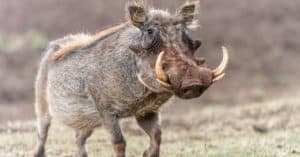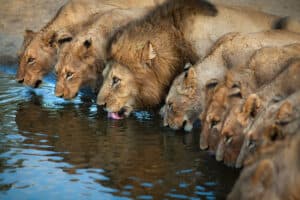Water buffaloes are seldom on anyone’s animal radar. But several water buffaloes facts may change this situation. For example, these animals are the second most prominent members of the Bovidae family. They are also domesticated globally for their strength and high-fat milk content. Moreover, there are two subspecies, the river and swamp buffaloes.
Otherwise known as the Asian or Asiatic water buffaloes, these beasts are endangered. However, they are not endangered due to dwindling numbers but because of domestication and because they form a large part of ritual hunting practices. Join us as we explore ten more incredible water buffalo facts.
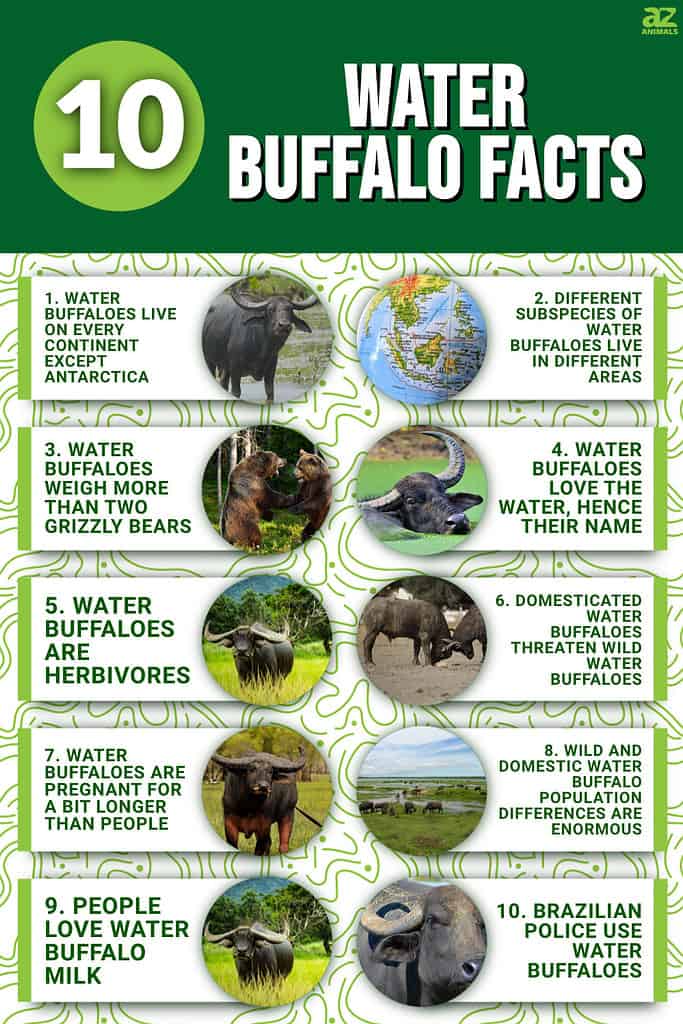
1. Water Buffaloes Live on Every Continent Except Antarctica
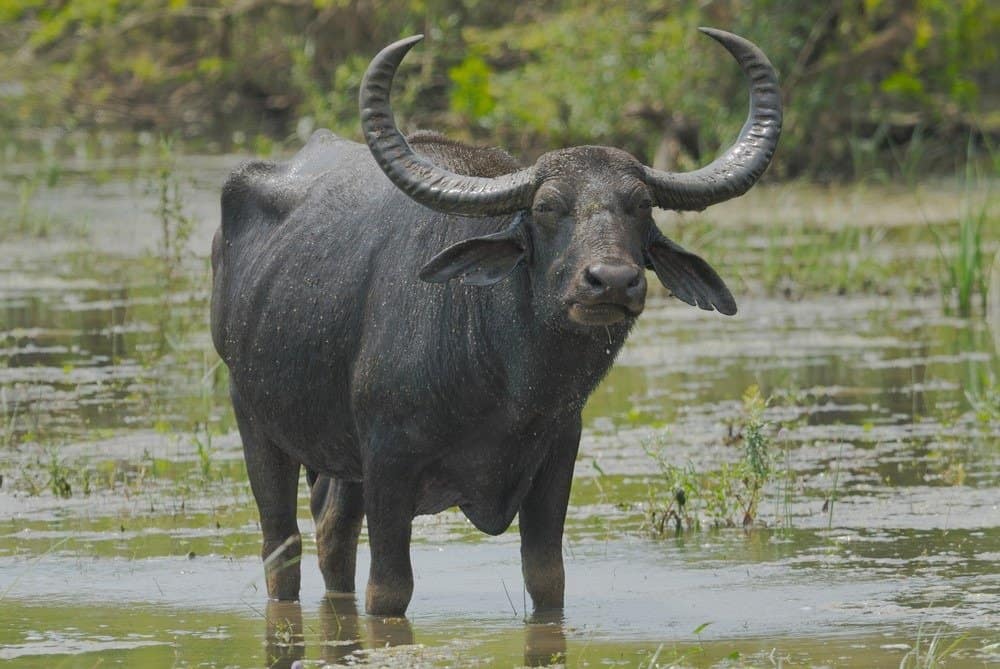
Water buffaloes live in Europe, Asia, Australia,
Africa
, and North and South America.
©Hugh Lansdown/Shutterstock.com
Domesticated water buffaloes live in Europe, Asia, Australia, Africa, and North and South America. They are known as natural tractors and work in farming. Wild buffalo populations have been declining, with these animals only living in their natural habitats in regions of Southeast Asia. You will find these wild buffaloes in India, Nepal, Thailand, and Bhutan protected areas.
Because of habitat loss and overhunting, the wild water buffalo now lives in remote or preserved areas, but this is not its preferred habitat. The water buffalo’s preferred habitat is thick jungles and swamplands, as these areas offer cover, water, and food sources. Water buffaloes may sometimes migrate, especially during rainy seasons.
2. Different Subspecies of Water Buffaloes Live in Different Areas
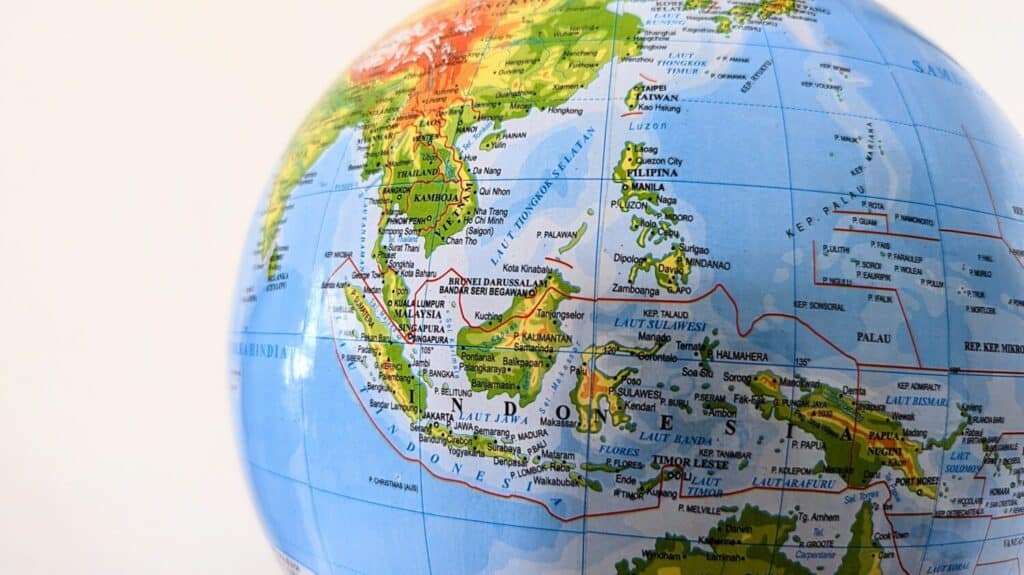
There are swamp and river buffalo that live in different parts of the world.
©hamzahstudio/Shutterstock.com
The water buffalo is native to India, Southeast Asia, and China, but the two subspecies live in different areas. River buffaloes live in the Indian subcontinent, the Balkans, Egypt, and Italy. Swamp buffaloes live in Assam, Southeast Asia, and China.
3. Water Buffaloes Weigh More Than Two Grizzly Bears

Male buffaloes usually around 2,500 pounds, which is more than two grizzly bears!
©Erik Mandre/Shutterstock.com
The wild water buffaloes grow almost 10 feet long and can reach six feet tall at their shoulders. They are dark gray to black with massive horns. A male water buffalo’s horns grow five feet long, and a female’s horns are usually smaller. The most enormous horn measurements on record are 13 feet 10 inches. Males are typically larger than females and weigh roughly 2,600 pounds. Domesticated buffaloes generally are smaller, weighing between 1,000 and 2,000 pounds, but some can be heavier.
4. Water Buffaloes Love the Water, Hence Their Name
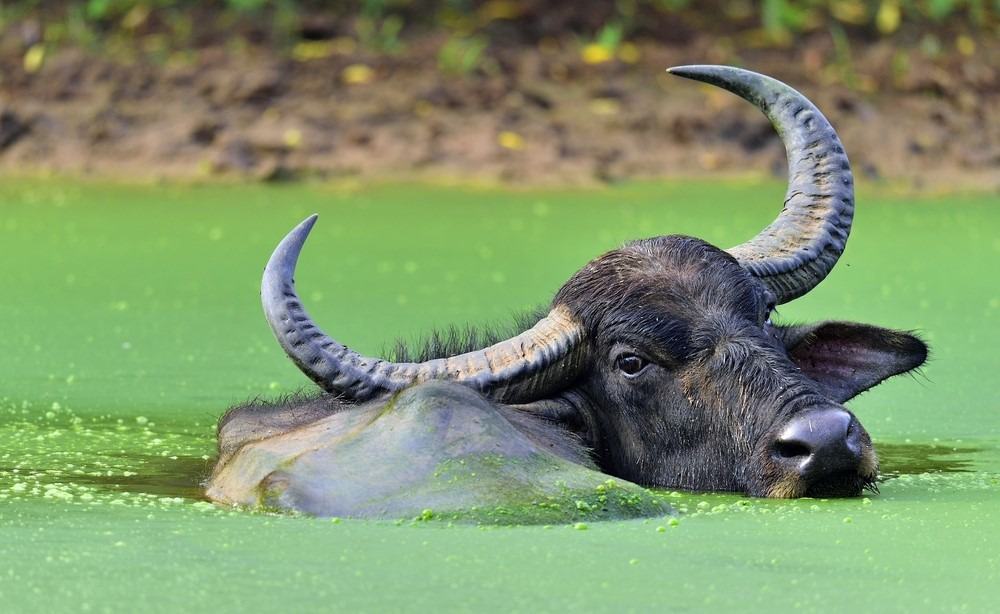
Water buffaloes cool themselves in water to regulate their temperature because they don’t have sweat glands.
©Sergey Uryadnikov/Shutterstock.com
Water buffaloes love immersing themselves in the water of rivers and swamps, sometimes up to their snouts. They do this because they don’t have sweat glands to cool themselves down. Instead, they use cool water to regulate their body temperature in warm and humid climates. These buffaloes also submerge themselves in water to avoid being bitten by insects in the humid jungle areas. Water buffaloes also use their big horns to shovel bottom mud from the rivers and swamps to throw on themselves. This behavior is known as wallowing.
5. Water Buffaloes Are Herbivores
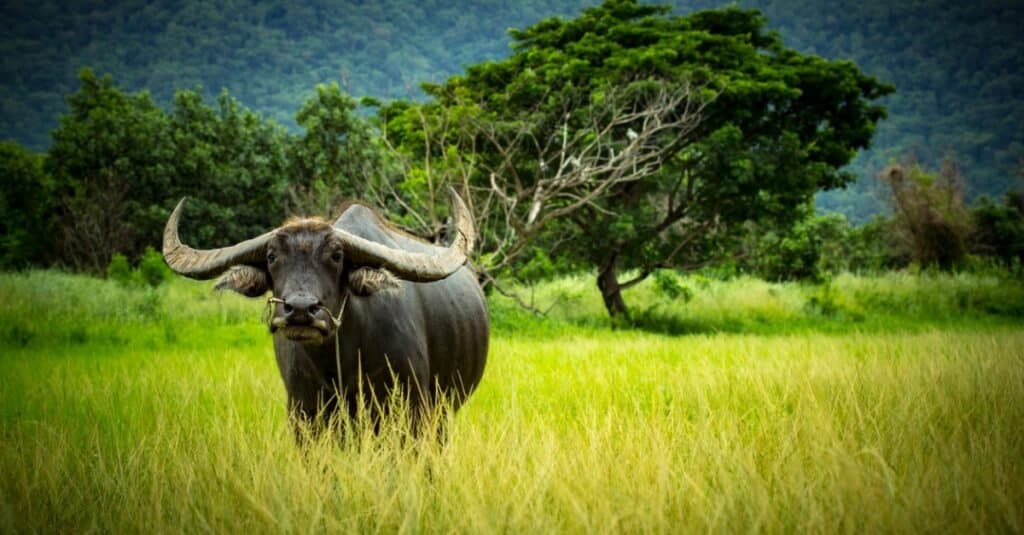
Buffaloes eat a great amount of grass.
©iStock.com/kimetan
These buffaloes are foragers, and their diets mainly consist of grass. They also eat fruit, shrubs, bark, and leaves. Wild water buffaloes feed at dusk and dawn in open areas. This foraging time also means that they avoid the worst of the day’s heat. Additionally, they control their temperatures by spending as much time in water and shady areas as possible. Feral water buffaloes will randomly feed, as they are more cattle-like than wild water buffaloes.
6. Domesticated Water Buffaloes Threaten Wild Water Buffaloes
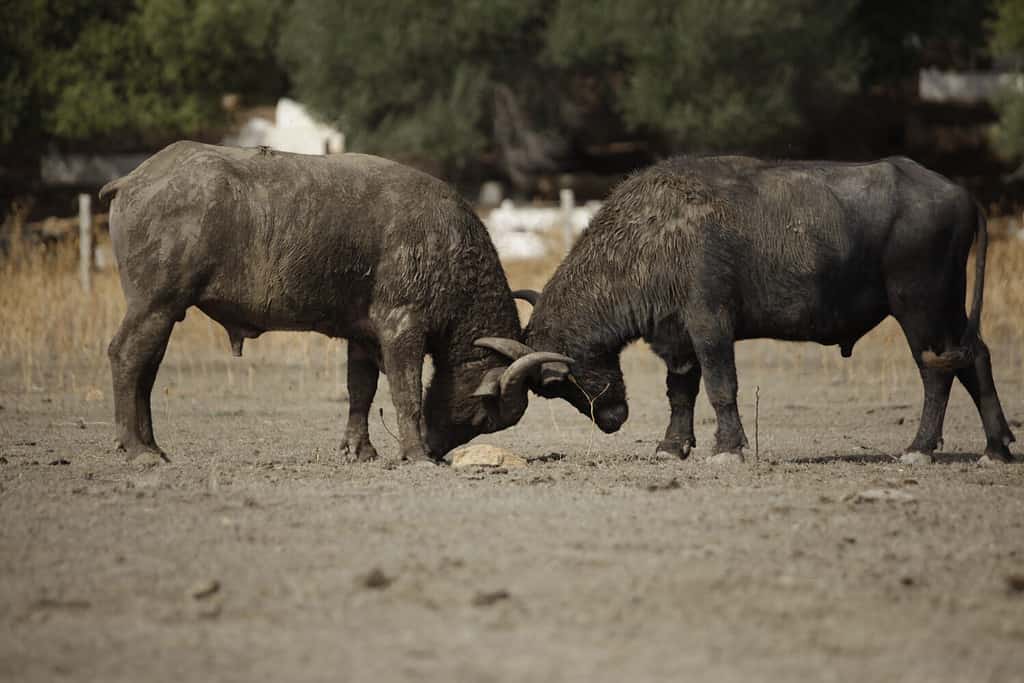
Interbreeding of wild and domestic water buffalo can be a problem.
©Agarianna76/Shutterstock.com
Domesticated buffalo species have become a threat to water buffaloes because of inter-breeding. If these species mate, wild water buffaloes lose their genetic identity and face exposure to the same diseases that threaten domestic buffaloes and cattle. Humans are also a significant threat to water buffaloes.
The wild water buffalo populations have been declining sharply due to people hunting them for meat, horns, and ceremonial purposes. Human development continues to threaten this species. Additionally, these animals face predators like tigers, leopards, and crocodiles in the wild. Their predators often work together and ambush these animals, as they are powerful and can easily injure the predator.
7. Water Buffaloes Are Pregnant for a Bit Longer Than People

Female water buffaloes typically have one calf each year and are pregnant for 10 to 11 months.
©iStock.com/SvdM
Female water buffaloes typically have one calf each year and are pregnant for 10 to 11 months. Females travel in maternal herds of only females and young male calves. A single older male or male bachelor herd will approach the maternal herd and find an accepting female to mate with. Male offspring leave the maternal herd after three years, but female offspring typically stay in the maternal herd for life. Wild buffaloes usually live for 25 years, while domesticated buffaloes live for 40 years.
8. Wild and Domestic Water Buffalo Population Differences Are Enormous
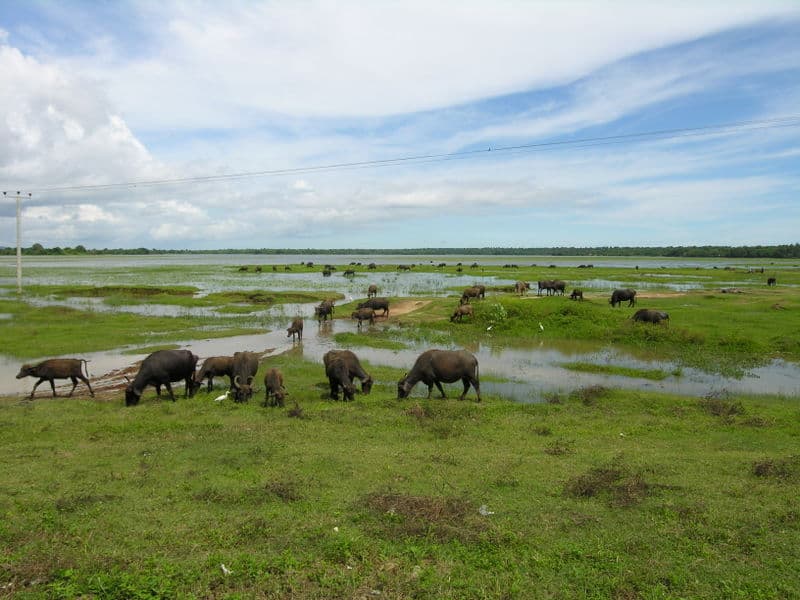
Wild water buffalo numbers are diminishing every day.
©Sudodana2048 / Public domain – License
Researchers are not 100% sure how many domestic water buffaloes exist but estimate there are more than 165 million domestic water buffaloes. Researchers are also not sure of the total population of wild water buffaloes because they live in remote, inaccessible regions. But, researchers gauge that there are about 4,000 wild water buffaloes. Their populations are dwindling because the wild water buffaloes mate with the domestic animals. Besides, the wild species have fewer choices among the herds, with more mating opportunities among domestic individuals and herds.
9. People Love Water Buffalo Milk

Water buffaloes produce over 70 million tons of milk annually.
©iStock.com/kimetan
Water buffaloes’ milk has higher protein, calcium, lactose, phosphorous, and iron levels than regular cow’s milk. Their milk also has less cholesterol and water. Annually, water buffaloes produce over 70 million tons of milk. India yields a large portion of this, providing almost 57 million tons of water buffalo milk in 2008. Their milk is not mainstream in western countries yet, but it is excellent for producing cheeses, ghee, whey, and butter. Humans use water buffaloes milk to make Italian-style mozzarella cheeses, domiati, kesong puti, khoa, and surti paneer.
10. Brazilian Police Use Water Buffaloes
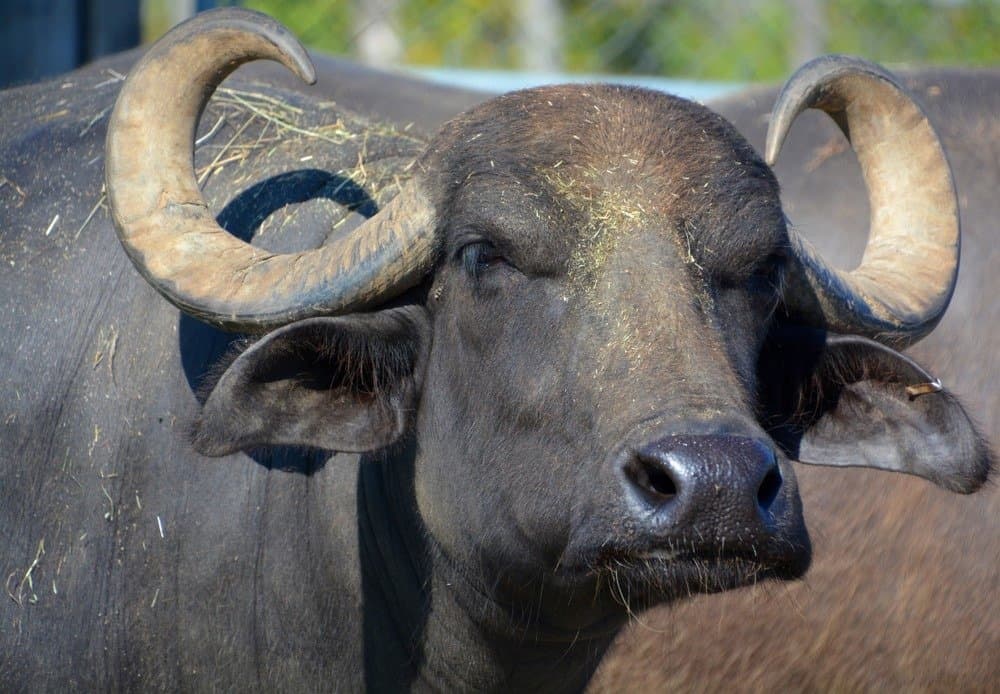
In some parts of Brazil, police use water buffaloes as transportation.
©meunierd/Shutterstock.com
People across the world domesticate water buffaloes and use them in farming. Brazil has taken this practice a step further. This country uses water buffaloes for transportation by some military officers. On Marajó, a Brazilian island, the water buffaloes outnumber humans and are part of daily life. Since the 1990s, military officers have ridden water buffaloes while on patrol. They have become a preferred form of transport because they swim better than dogs and are more agile than horses in swampy areas. These military water buffaloes are known as “buffalo soldiers” and are a tourist attraction on the island.
The photo featured at the top of this post is © David Havel/Shutterstock.com
Sources
- Animalia, Available here: https://animalia.bio/water-buffalo
- Heifer International, Available here: https://www.heifer.org/blog/5-things-you-didnt-know-about-water-buffalo.html#:~:text=Water%20Buffalo%20can%20be%20Fast,reach%20speeds%20of%2030%20mph
- JustFunFacts, Available here: http://justfunfacts.com/interesting-facts-about-water-buffalos/
- Facts.Net, Available here: https://facts.net/water-buffalo-facts/
Thank you for reading! Have some feedback for us? Contact the AZ Animals editorial team.




